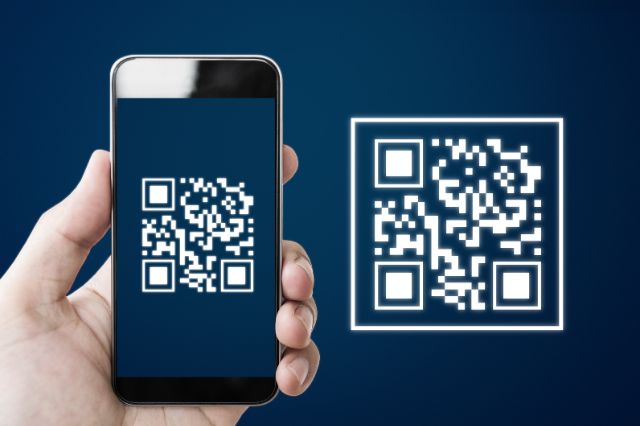Business
Unlocking The Full Benefit of Enterprise Resource Planning Solutions – 10 Benefits


Enterprise Resource Planning (ERP) solutions are powerful tools to help businesses streamline their operations and increase efficiency. But in order to unlock the full benefit of an ERP solution, organizations must understand the value it can bring and the steps necessary for successful implementation. This article looks at 10 key benefits that organizations can expect from implementing a well-developed ERP system:
1. Increased Efficiency
By bringing all of the parts of an organization into a single, unified platform, Enterprise Resource Planning solutions allow businesses to automate and streamline their processes, improving efficiency and eliminating unnecessary manual labor.
If you’re looking to increase efficiency and reduce costly errors, an ERP manufacturing module and solution can help you achieve this goal. Otherwise, you could end up wasting time and money on manual processes that can be done more quickly and accurately with an ERP system.
2. Improved Decision-Making
One of the greatest advantages of implementing an Enterprise Resource Planning solution is the ability to access accurate, real-time data from throughout the organization. This helps executives make informed decisions that are based on objective data rather than gut instinct. This improves the accuracy of decision-making and reduces the likelihood of costly mistakes.
With ERP solutions, organizations can analyze data from multiple sources to gain a comprehensive understanding of the current state of their business. This allows them to make more informed decisions and identify areas for improvement.
3. Increased Visibility
ERP systems provide increased visibility across all parts of an organization, giving managers and executives a better view of how their operations are performing. This helps them to identify potential areas of improvement, analyze performance trends, and develop strategies for improving efficiency and profitability.
Having visibility into the different parts of your business allows you to make better decisions and ensure that all departments are working in harmony with one another. This improves productivity and reduces the likelihood of problems occurring down the line.
4. Scalability
Unlike manual processes, ERP solutions are designed to scale with the growth of an organization. This allows businesses to expand and adapt quickly without having to invest in additional software or labor-intensive manual processes.
Organizations can easily add new users and modules as their business grows, ensuring that their operations remain efficient and effective. This allows businesses to stay competitive and respond quickly to changes in their industry.
5. Cost Savings
The cost savings associated with implementing an Enterprise Resource Planning solution are often quite significant. Automating processes and eliminating manual labor can lead to significant cost savings, as well as improved efficiency that cuts down on the amount of time spent on tedious tasks.
ERP solutions also reduce the risk of errors due to their accuracy and streamlined processes. This leads to cost savings in terms of both time and money, as fewer mistakes mean less time spent fixing them.
6. Enhanced Security
ERP systems are designed with security at their core, ensuring that an organization’s data remains safe and secure. This is especially important for organizations that handle sensitive customer information such as financial data or medical records.
By implementing an Enterprise Resource Planning solution, businesses can rest assured that their data is safe and secure from potential external threats. ERP systems provide a high level of security to protect against unauthorized access, malware, and other malicious attacks.
7. Improved Customer Service
ERP systems give businesses the ability to track customer orders and manage inventory in real time. This helps them to provide faster and more accurate customer service, leading to increased customer satisfaction.
Having access to real-time data also allows companies to respond quickly to changes in demand or identify potential problems before they become major issues. This helps to ensure that customers always receive the highest quality of service possible.
8. Reduced Paperwork
ERP solutions eliminate the need for manual paperwork, which can be time-consuming and error-prone. Automating processes such as invoicing, order fulfillment, inventory management, and more reduces the amount of paper needed, freeing up administrative staff to focus on more important tasks.
The streamlined processes that come with an ERP system also mean that paperwork is handled more quickly and accurately. This saves time, money, and resources, making it easier for businesses to stay organized and efficient.
9. Mobile Accessibility
Many ERP solutions now offer mobile apps or cloud-based access, allowing businesses to access and manage their data in real-time from any device. This is incredibly useful for teams that are always on the go, as they can stay connected and up-to-date even when away from the office.
Having this level of mobility also makes it easier for organizations to quickly respond to changes or urgent requests. This increases efficiency and allows them to stay competitive in an ever-changing business landscape.
10. Facilitated Compliance with Regulations
Many organizations are subject to a variety of regulations, from tax laws to safety standards. ERP solutions help these companies stay compliant by providing visibility into their operations and giving them the tools they need to ensure that their processes are in line with industry regulations.
This not only helps organizations avoid costly fines and penalties, but it also protects them from potential legal issues down the road. By implementing an ERP system, businesses can rest assured that their operations remain compliant and secure.
Conclusion
The benefits of implementing an Enterprise Resource Planning system are clear. From reducing costs and increasing efficiency to improved security and customer service, ERP solutions provide organizations with the tools they need to stay competitive and successful.
With mobile accessibility and facilitated compliance with regulations, businesses can rest assured that their operations are handled securely and efficiently.
It is important for organizations to evaluate their needs and choose an ERP system that best fits their specific requirements. By doing so, they will be able to maximize the potential of an ERP solution and ensure long-term success.
Law
Legal Lifelines: How Personal Injury Attorneys Rescue Your Rights and Recovery


Life can take a sharp turn in the blink of an eye. One moment, you’re going about your day as usual; the next, you find yourself grappling with the aftermath of an injury.
The consequences can be profound, whether it’s a car crash, a workplace mishap, or a slip-and-fall incident. They can affect your physical health, financial stability, and emotional well-being.
In such moments of crisis, personal injury attorneys emerge as the unsung heroes, extending a lifeline to those in need. With their expertise, dedication, and unwavering commitment to justice, these professionals play a pivotal role in safeguarding individuals’ rights and recovery.
The Anatomy of a Personal Injury Case
It’s important to comprehend the components of a personal injury case before diving into the priceless contributions made by personal injury attorneys. Fundamentally, a personal injury claim occurs when someone is harmed as a result of the careless, reckless, or malicious actions of another party.
This harm can encompass a broad spectrum of injuries, ranging from physical to psychological. Moreover, it can occur in various settings, including on the road, at work, or on someone else’s property.
There are various types of personal injuries that you can suffer. Some of these injuries include vehicle accidents, slip-and-falls, medical malpractice, product liability, wrongful deaths, etc.
Once a personal injury occurs, the injured party can file a lawsuit to seek compensation. Consider the example of a recent car accident in Chicago, Illinois (IL). As covered by an NBC Chicago news article, two pedestrians were severely injured in a car crash. The crash occurred in the Ukrainian Village in Chicago, IL.
Both pedestrians were taken to the Stroger Hospital. Treating the injuries required a lot of medical expenses. Since the accident was not the pedestrians’ fault but that of the driver who crashed the vehicle, the victims can seek compensation. This can be done through a personal injury lawsuit.
Personal injury attorneys in Chicago, IL, can help the victims build a strong case against the negligent driver. They can help the pedestrians seek the rightful compensation for their damages.
There are several other things that personal injury lawyers can do to help a victim throughout the legal proceedings.
The Role of Personal Injury Attorneys
Personal injury attorneys are the guiding light in this intricate dance of legal proceedings. They help navigate the maze of statutes, regulations, and precedents precisely and skillfully.
Their multifaceted role encompasses a myriad of responsibilities, each geared towards protecting the rights and interests of their clients.
Legal Expertise and Advocacy
Their profound understanding of tort law is central to personal injury attorneys’ mission. It is the branch of civil law that governs personal injury claims. Armed with this knowledge, they meticulously analyze each case’s circumstances, identifying potential legal theories and avenues for recourse.
Whether it’s establishing negligence, proving causation, or quantifying damages, these legal experts leverage their expertise to construct compelling arguments. Moreover, personal injury attorneys serve as staunch client advocates, tirelessly championing their cause in negotiations and courtrooms.
Negotiation and Resolution
One of the hallmark skills of personal injury attorneys is their adeptness at negotiation. According to Nolo, personal injury negotiation requires contacting the insurance claims adjuster. Moreover, you need to have a settlement amount and avoid jumping on the first offer you get.
Negotiating might sound simple, but it is not. Insurance companies use different tactics to determine a settlement amount. This is where personal injury lawyers can help. Recognizing that most cases are resolved through settlements rather than trials, these attorneys employ strategic negotiation tactics to secure favorable outcomes.
Resource Mobilization and Support
Beyond their legal acumen, personal injury attorneys are a vital source of support and guidance for their clients. Recognizing the emotional and financial strain associated with personal injury claims, these attorneys provide much-needed reassurance and assistance at every step.
From coordinating medical treatment to facilitating communication with medical providers, personal injury attorneys streamline the recovery process. They alleviate the burden on their clients and allow them to focus on healing.
They frequently operate on a contingency fee basis as well, which means they only get paid if and when their clients get paid. This arrangement guarantees everyone, regardless of income level, access to legal representation.
How to Find the Right Personal Injury Lawyer for Your Case
According to IBISWorld, there were 50,693 personal injury lawyer businesses in the USA in 2023. This shows that there are ample options available when it comes to choosing a lawyer for your case.
Finding the right personal injury lawyer for your case is crucial to ensure you receive the best representation and outcome. Here are the steps you can take to find the right attorney:
- Identify your needs: Understand the specifics of your case. Personal injury law covers many situations, including car accidents, medical malpractice, workplace injuries, slip and fall accidents, etc. Determine the type of injury you’ve sustained and the circumstances surrounding it.
- Research: Use various resources to find potential lawyers. You can start with:
- Personal recommendations from friends, family, or acquaintances who have used personal injury lawyers.
- Online directories of attorneys.
- Bar association websites often have directories of lawyers categorized by specialty.
- Online review platforms to see what previous clients have said about different lawyers.
- Check credentials and experience: Look for lawyers who specialize in personal injury law and have experience handling cases similar to yours. Check their credentials, education, certifications, and any awards or recognition they may have received. Experience in the local court system can also be beneficial.
- Evaluate communication and rapport: Pay attention to how well you communicate with the lawyer during the consultation. A good lawyer should listen to your concerns, answer your questions clearly, and make you feel comfortable. Building a rapport with your lawyer is important as you will work closely throughout your case.
- Consider reputation and track record: Look into the lawyer’s reputation within the legal community and their track record of success in handling personal injury cases. You can search for any disciplinary actions or complaints against the lawyer through the state Bar Association.
- Trust your instincts: When choosing a personal injury lawyer, trust your instincts. Select someone you feel will effectively represent your interests and who you believe will work diligently to achieve the best possible outcome for your case.
Frequently Asked Questions
What Are the Benefits of a Personal Injury Lawyer?
Hiring a personal injury lawyer offers numerous benefits, including legal expertise, resource access, peace of mind, etc.
How Do I Prepare to Meet a Personal Injury Lawyer?
The process of hiring a personal injury lawyer usually starts with an initial meeting to analyze your case. Before the meeting, you should gather relevant evidence, note down any details, and prepare questions to ask.
What Are the Most Common Types of Personal Injury Cases?
Personal injury is a broad area of law encompassing different types of cases. Some of the most common types of personal injury cases include vehicle accidents, slips and falls, medical malpractice, and product liabilities.
To conclude, personal injury attorneys serve as beacons of hope, guiding injured individuals through the labyrinth of legal proceedings. These legal lifelines play a pivotal role in safeguarding the rights and recovery of those grappling with the aftermath of accidents and injuries.
Personal injury attorneys embody the essence of justice as pillars of support and agents of change. They ensure that no injury goes unanswered and no injustice goes unchallenged. In the grand tapestry of the legal landscape, they stand as champions of the vulnerable, illuminating the path to healing, restitution, and redemption.
Business
Innovative Solutions: Harnessing QR Codes for Effective Foodservice Management


The world of food service is constantly evolving, and technology plays a pivotal role in shaping its landscape. QR codes are a versatile and efficient solution among the tech tools that have a significant impact.
This article aims to delve into the multifaceted role of QR codes in revolutionizing food service management, exploring their definition, benefits, implementation strategies, challenges, future trends, and transformative potential.
- Definition and Introduction to QR Codes in Foodservice
At its core, a QR code, or Quick Response code, is a two-dimensional barcode that can store a wide range of information. Initially designed for inventory tracking in the automotive industry, QR codes have swiftly entered various sectors, including foodservice.
- Understanding the Role of QR Codes in Enhancing Foodservice Management
The primary goal of this article is to dissect the significance of QR codes within foodservice, emphasizing their role in optimizing operations, enhancing customer experience, and addressing post-pandemic safety concerns.
Understanding QR Codes in Foodservice
- What are QR Codes?
Quick Response codes, or QR codes for short, are two-dimensional barcodes that can transmit and retain data. QR codes were first created in Japan to track car parts. Still, they have since expanded into a flexible tool utilized in many different industries, including the foodservice industry.
These codes can hold various kinds of data, including text, URLs, contact details, and other digital content. They are made up of black squares organized on a white background. Smartphones and other gadgets with cameras and QR code reading software can quickly scan them thanks to their unique layout.
In foodservice, QR codes have emerged as a modern solution to address multiple operational needs, including menu access, order processing, payment, customer engagement, and more.
Their ease of use and adaptability make them valuable for streamlining processes and enhancing customer experiences in restaurants, cafes, food trucks, and various dining establishments.
- Evolution and Adoption of QR Codes in the Food Industry
The evolution of QR codes within the food industry reflects a remarkable journey from their initial usage as inventory tracking tools to becoming integral components of food service operations.
Initially gaining traction in Asian markets, QR codes gradually expanded their presence worldwide, especially with the increasing ubiquity of smartphones and technological advancements.
Their adoption within the food industry accelerated due to several factors, including the need for contactless solutions during the COVID-19 pandemic, the growing emphasis on enhancing customer experiences, and the drive for operational efficiency.
Restaurants and foodservice businesses swiftly recognized the potential of QR codes in addressing these needs, leading to their widespread integration into various aspects of the industry.
Benefits of QR Codes in Foodservice Management
- The Simplicity of QR Code Creation
One of the standout advantages of QR codes, particularly in the food service industry, is the straightforward and user-friendly process involved in their creation. This simplicity empowers businesses of all sizes to effortlessly incorporate these codes into their operations.
A wide array of online platforms and mobile applications designed explicitly for QR code generation exists. These platforms offer intuitive interfaces, enabling users to create a QR code for a URL easily.
Inputting various data types such as URLs, text, contact details, or other information is a hassle-free process within these platforms.
The customization options provided by these tools are a key feature. Businesses can tailor their QR codes by incorporating branding elements like logos, colors, or designs, ensuring consistency with their visual identity and enhancing recognition.
Typically, the creation process involves a few simple steps: selecting the content type to be encoded, inputting the desired information, and optionally customizing the appearance of the QR code.
Once generated, these codes are readily available for download in multiple formats, ensuring compatibility across various marketing materials, menus, or digital platforms.
- Enhanced Customer Experience: Ordering and Menu Accessibility
QR codes revolutionize the dining experience by simplifying the ordering process and granting patrons convenient access to menus, ultimately elevating customer satisfaction. By seamlessly integrating QR codes into the dining environment, customers can effortlessly access menus by scanning codes placed on tables, menus, or promotional materials.
This eliminates the need for physical menus, reduces paper waste, and allows for real-time product updates or modifications. The ease of access and comprehensive information provided through QR-enabled menus empower customers to make informed choices and accommodate dietary preferences or special requests.
Consequently, this streamlined approach expedites ordering, minimizes waiting times, and enhances overall dining experiences, contributing significantly to customer contentment and loyalty.
- Operational Efficiency: Streamlining Processes and Inventory Management
QR codes are pivotal in streamlining operational processes and optimizing food service inventory management. These codes are efficient tools for simplifying various tasks, including order processing, inventory tracking, and logistical operations.
By integrating QR codes into inventory systems, restaurants and food businesses gain real-time visibility into stock levels, enabling accurate monitoring of product movements and reducing the likelihood of errors or discrepancies. This heightened efficiency translates to reduced waste, optimized stocking levels, and improved inventory turnover rates.
Moreover, QR codes facilitate precise tracking of expiration dates, ensuring that perishable items are managed effectively, thereby minimizing food wastage and maximizing operational efficiency.
- Contactless Payments and Safety Measures in the Post-Pandemic Era
In response to the heightened need for safety measures in the post-pandemic era, QR codes emerge as instrumental tools in facilitating contactless payments and ensuring the safety of both customers and staff.
With the increased emphasis on hygiene and limited physical contact, QR codes enable customers to make secure and contactless payments through their smartphones or mobile payment platforms.
By scanning a QR code displayed at checkout, customers can complete transactions without handling cash or physical cards, reducing the risk of potential viral transmission. This contactless payment method aligns with health protocols and instills confidence in patrons, fostering a sense of safety and reassurance while dining out.
- Marketing and Promotional Opportunities Through QR Code Integration
QR codes present many opportunities for foodservice businesses to engage in effective marketing campaigns and promotional activities. These codes are versatile marketing tools, allowing establishments to link customers to exclusive offers, discounts, loyalty programs, or promotional content.
Businesses can connect seamlessly with their target audience by strategically placing QR codes on marketing materials, receipts, or physical products, driving engagement and brand loyalty. QR codes also facilitate tracking customer interactions, providing valuable data insights businesses can leverage to tailor marketing strategies and enhance customer relationships.
This direct and interactive engagement enhances brand visibility and fosters a more personalized and engaging customer experience, bolstering customer retention and attracting new clientele.
Conclusion
Integrating QR codes emerges as a transformative and indispensable tool in the dynamic realm of foodservice. Throughout this exploration, the multifaceted role of QR codes in revolutionizing foodservice management has been unveiled.
From their origins as inventory tracking tools to integral components within the food industry, QR codes have evolved significantly, becoming catalysts for operational efficiency, enhanced customer experiences, and innovative marketing strategies.
The seamless accessibility afforded by QR codes in ordering processes and menu navigation has expedited service and heightened customer satisfaction. Their instrumental role in streamlining operational processes, optimizing inventory management, and facilitating contactless payments has not gone unnoticed, revolutionizing safety measures in the post-pandemic era.
Moreover, QR codes have opened new avenues for foodservice businesses to engage with their patrons through personalized marketing initiatives, driving customer loyalty and fostering brand connections.
As the foodservice industry continues to evolve, the transformative potential of QR codes remains undeniably influential. Their adaptability and versatility offer a glimpse into a future where technology intersects seamlessly with dining experiences, promising greater efficiency, safety, and engagement for businesses and customers.
Finance
How Cash Buying is Reshaping the Property Selling Process


In recent years, the dynamics of the property market in the UK have undergone a significant transformation, with the rise of cash buying playing a pivotal role in reshaping the traditional property selling process.
This shift has introduced new opportunities and challenges for sellers, buyers, and industry professionals alike, streamlining transactions and altering expectations on both sides of the market.
The Rise of Cash Buying
Cash buying, where a property is purchased without the need for a mortgage, has become increasingly popular. This method offers a stark contrast to the traditional, often lengthy process of property acquisition, which typically involves securing a mortgage, undergoing extensive credit checks, and navigating a maze of legal requirements.
Accelerated Transaction Times
One of the most appealing aspects of cash buying is the significant reduction in transaction times. Without the need to wait for mortgage approvals or navigate the bureaucratic hurdles associated with loan acquisition, cash transactions can often be completed in a fraction of the time required for traditional sales.
This speed and efficiency are not only beneficial for buyers, eager to move into their new homes, but also for sellers who are looking to complete the sale swiftly and with minimal fuss.
The Impact on Market Dynamics
Cash buying has also had a profound impact on market dynamics, particularly in highly competitive areas. Sold online estate agents London captures the essence of the digital transformation in the property market, where platforms now facilitate rapid, direct transactions, often involving cash buyers.
This shift has led to increased liquidity in the market, enabling quicker sales and often resulting in closer to asking price offers, as the traditional barriers to sale are removed.
The Changing Role of Estate Agents
The rise of cash buying has necessitated a change in the role of estate agents. No longer just mediators between buyers and sellers, agents now must navigate a landscape where speed, efficiency, and an understanding of cash transactions are paramount.
Estate agents are increasingly leveraging online platforms to match cash buyers with sellers, streamlining the process, and offering a more dynamic service tailored to the modern market’s needs.
Digital Platforms and Market Access
Digital platforms have become crucial in connecting cash buyers with sellers, offering a broader reach and access to a wider array of properties. This digital shift has democratized access to the property market, allowing for a more inclusive range of participants, from seasoned investors to first-time buyers looking to avoid the traditional mortgage route.
Benefits and Considerations for Sellers
For sellers, the appeal of cash buying is clear: quicker transactions, reduced risk of sales falling through, and the elimination of chain dependencies. However, it’s essential for sellers to conduct due diligence on their prospective buyers, ensuring that funds are verified and the transaction is secure.
Navigating the Future Landscape
As the property market continues to evolve, both sellers and buyers must adapt to the new norms introduced by cash buying. For sellers, understanding the benefits and potential pitfalls of cash offers is crucial. For buyers, the ability to move quickly and secure properties without the need for mortgage approval can be a game-changer, particularly in competitive markets.
A New Era for Property Transactions
The shift towards cash buying is indicative of a broader trend towards efficiency and speed in the property market. As technology continues to advance, we can expect further innovations that will streamline the buying and selling process, making it more accessible, efficient, and transparent for all parties involved.
Beyond the Conclusion: A Glimpse into the Future
As we look towards the future, the landscape of the property selling process will continue to be shaped by the trends of cash buying and digital transformation. This evolution promises a more streamlined, efficient, and flexible market, where opportunities abound for those willing to adapt and embrace the new paradigms of property transactions.
-



 Quotes4 years ago
Quotes4 years ago125 Inspirational Car Quotes and Captions to Celebrate Your New Car
-



 Growth4 years ago
Growth4 years ago188 Deep Hurt Quotes with Images
-



 Quotes3 years ago
Quotes3 years ago148 Romantic Love Quotes for Her from the Heart
-



 Quotes3 years ago
Quotes3 years ago185 Cute Boyfriend Quotes for the Guy You Love
-



 Quotes3 years ago
Quotes3 years ago141 Best Heart Touching Quotes about Love, Life, and Friendship
-



 Quotes3 years ago
Quotes3 years ago134 Time Flies Quotes for the Unforgettable Moments
-



 Quotes3 years ago
Quotes3 years ago122 Inspirational Kite Quotes That’ll Make You Wanna Fly Right Now
-



 Quotes4 years ago
Quotes4 years ago101 Powerful Black Women Quotes to Empower You






